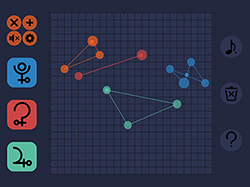fit.jpg) |
About |
Projects |
Publications | |||
| Sonic Engineering Lab for Creative Technology is the confluence between art and technology. It is a collaboration between the School of Engineering and Computer Science and New Zealand School of Music at Victoria University of Wellington. The lab explores the implementation of creative technology in musical applications. Main areas of research include Mechatronic Sound Sculptures, Gesture Recognition for Musical Applications, Augmented Instruments, Interactive Sensors Systems, Computational Ethnomusicology, and Hyper-Pedagogy. |
Featured Projects
 pyxis minor is a novel instrument / sequencer / synthesizer for Mac OS and iOS Devices developed by Timothy Barraclough as part of a Masters of Engineering Thesis. |
| Swivel 2 is a six-stringed mechatronic slide guitar. Designed and built by Jim Murphy, Swivel 2 consists of six separate string modules, each equipped with a normal guitar string. Each string module is assigned a MIDI channel and can pick, damp, pitch-shift, and clamp onto the string in response to MIDI messages. Swivel 2, along with SELCT's other musical robots, has been designed with a goal of musical expressivity. To realise this goal, Swivel 2 is equipped with a relatively large number of actuators, allowing for individual parametric control over many aspects of the instrument. |
Kontrol is a hand interface built by Jingyin He and Kameron Christopher to extract the intricate expressivity of performers of various performative backgrounds. The goal is to provide a tool for the natural interpretation of gestures that interfaces with the performer in conjunction with the performative task. It consists of a micro controller that transmits accelerometer data wirelessly to a computer. Kontrol utilizes accelerometers to extract ancillary and auxiliary nuances in individual fingers of each hand. The system then performs static and dynamic classification to address gestural data for interpretations of gesture(s)-to-parameter(s) mapping(s). More info here. |
Rasper is a mechatronic noise-intoner designed and built by Mo H. Zareei in which mechatronics and microcontroller programming are used in order to create rhythmically regulated noise. The noise (rasping) is generated mechanically and the noise-production apparatus is visible and accompanied by further visual feedback provided by an LED strip reminiscent of florescent tubes. Rasper brings the ignored and unwanted noises of the machine to aural attention by regulating their irregularity through a rhythmic grid of pulses and metric rhythms, while highlighting their physicality. |
| |